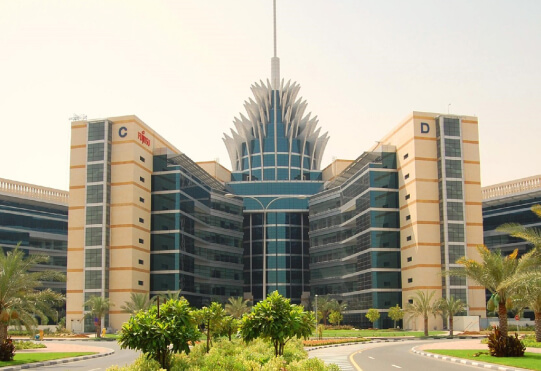The United Arab Emirates (UAE) and Saudi Arabia are two of the most influential countries in the Arab Gulf. Their strategic location at the crossroads of Europe, Asia, and Africa is also making them an attractive destination. As such, many B2B companies around the world look to these countries as potential destinations for regional expansion and headquarters. In this article, we will break down the main differences between these two global markets.
The UAE is known as an international hub for trade and commerce, with a highly diverse economy that appeals to businesses seeking to expand in the Arab Gulf region. As a well-established regional business center, the UAE has multiple options for quick and cheap company formation.
Nonetheless, Saudi Arabia offers an even more promising market, having emerged as the largest market in terms of both size and potential. It tries to catch up with the UAE by adopting new incentives and liberalizing domestic business culture.
Both the UAE and Saudi Arabia have been working to reduce their traditional reliance on oil and gas and develop more diversified and resilient economies. To achieve this, the UAE has established over 50 free zones and investment promotion agencies such as the Dubai International Financial Centre (DIFC) and the Abu Dhabi Global Market (ADGM). These zones offer various incentives, such as tax exemptions, 100% foreign ownership, and simplified registration procedures.
Similarly, Saudi Arabia has introduced the Vision 2030 plan to transform its economy and privatize state-owned assets. The plan includes a range of initiatives to develop sectors such as healthcare, education, tourism, and entertainment, creating new business opportunities for companies operating in the country.
Overall, the B2B market trends in both the UAE and Saudi Arabia are positive, as they continue to invest in the growth of their private sectors. However, despite significant progress made, many large B2B clients in both countries are still government-owned, and the royal families continue to play a key role in the business landscape.
When considering which region is the best fit for their B2B services, businesses must take into account some key differences between business cultures in the UAE and Saudi Arabia. Firstly, certain B2B markets are still in the developmental stage in Saudi Arabia, while the same markets in the United Arab Emirates are highly developed due to the country’s investment in these sectors for several decades. With significant economic diversification and a well-established business ecosystem, the UAE offers a favorable environment for innovation and experimentation. However, Saudi Arabia offers opportunities for engagement with global B2B players, such as Saudi Aramco, the world’s largest oil company, or Almarai, one of the largest dairy producers globally, making it ideal for businesses with ambitious financial goals.
The second significant difference between the business approach in the UAE and Saudi Arabia is the dominance of local culture in Saudi Arabia. It means that building trust and establishing strong relationships with business partners is crucial. In Saudi Arabia, mainly local citizens occupy top management positions and it is common to be invited by potential business partners to a lunch or dinner to continue conversations on a more personal level. In contrast, the UAE has moved away from traditions and has various cultural approaches.
Lastly, while Saudi Arabia presents a great opportunity for those seeking great financial pursuits, a transformative breakthrough is necessary to avoid getting bogged down in corporate bureaucracy that can take years to navigate in order to certify a company and complete necessary processes. Additionally, establishing a local branch without a local shareholder can be challenging and expensive. Despite this, foreign investment regulations in Saudi Arabia have become more accessible in recent years, with entrepreneurs from outside the country now able to maintain 100% ownership of their businesses in several sectors.
On the other hand, the UAE, as a more diverse country, makes it much easier and cheaper to open an office with foreign investment. Foreign entrepreneurs can register a business with 100% ownership under their legislation in free zones. Each free zone has its advantages, and the cost of company registration varies depending on the zone.
Advice for foreign businesses on setting up B2B operations in the UAE and Saudi Arabia
Expanding a B2B business to a new market in the United Arab Emirates or Saudi Arabia requires careful consideration and strategic planning to minimize risks and maximize returns. Before establishing a local branch, B2B companies should conduct research through analytical reports or paid ad campaigns to identify potential target customers and determine the best ways to approach them.
It is essential to consider the legal and financial requirements of each country, including costs associated with company registration and licensing. Establishing a company in Saudi Arabia typically costs around 15,600 SR (approximately USD 4,160). It contains submitting an application to the Ministry of Investment Services Manual (MISA) and obtaining the license, publication of the company name and a summary of the Articles of Association in the official gazette, and registration with the Ministry of Commerce and Chamber of Commerce. Company registration in the UAE includes the company registration fee, the share capital cost, which differs significantly for each free zone, and some recurring costs. The total cost just to legitimize the company in the UAE starts at 10,000 AED (around USD 2,720).
Moreover, it is of utmost importance to comprehend the cultural nuances in business practices in the UAE and Saudi Arabia. The approach to business in these regions is relationship-driven, with an emphasis on trust and customer service. It is essential to provide a solution to clients’ actual problems and showcase the business, considering competition. Additionally, cultural traps and bureaucratic obstacles that businesses intending to expand into these markets must consider. These hurdles include corporate bureaucracy, local unpunctuality and prompt responses, and the requirement to collaborate with local agents or representatives.
Despite the challenges, the potential for growth and revenue generation in the UAE and Saudi Arabia is immense. Approaching big clients in these markets requires patience, persistence, and a strategic approach. If you require assistance with setting up your business, consider reaching out to CFC Big Ideas for support.
****
The material was prepared by Yana Tepla, Digital manager at CFC Big Ideas.



